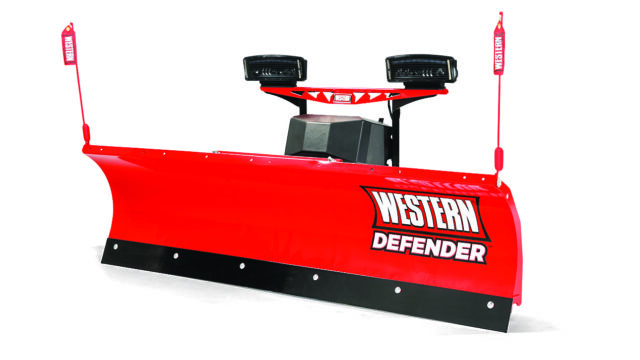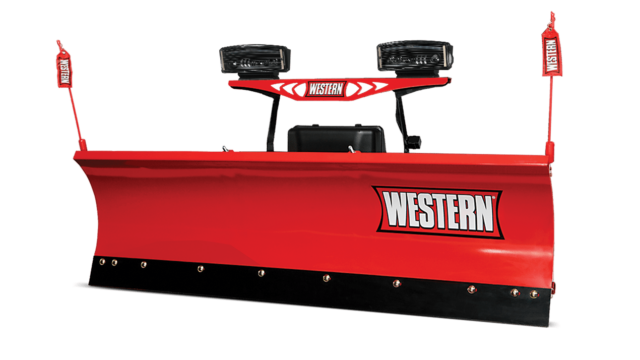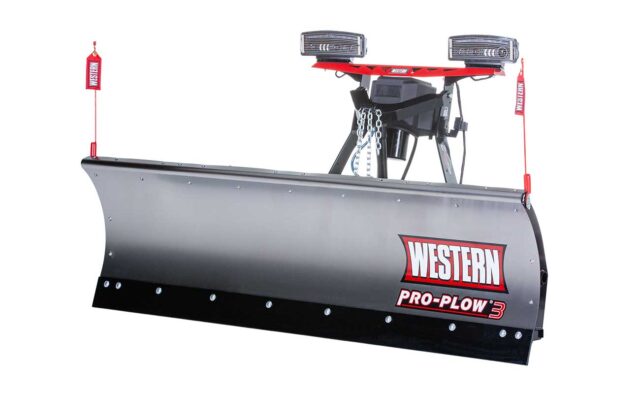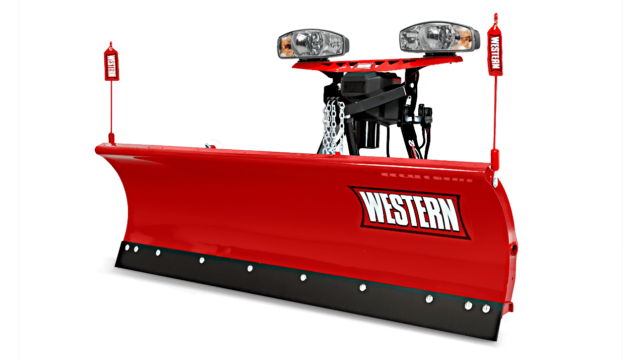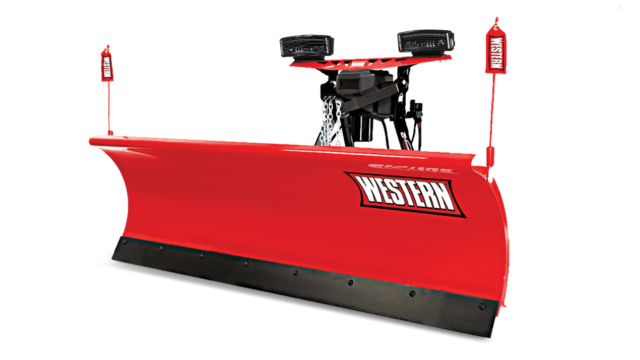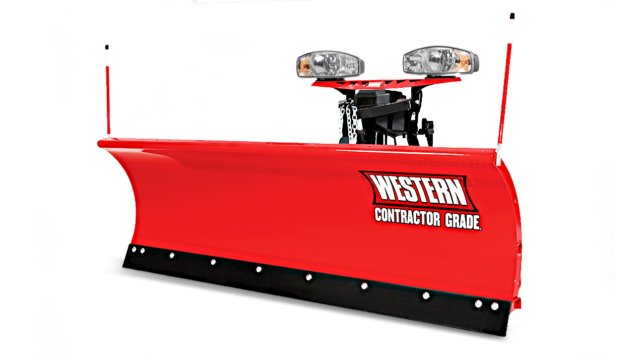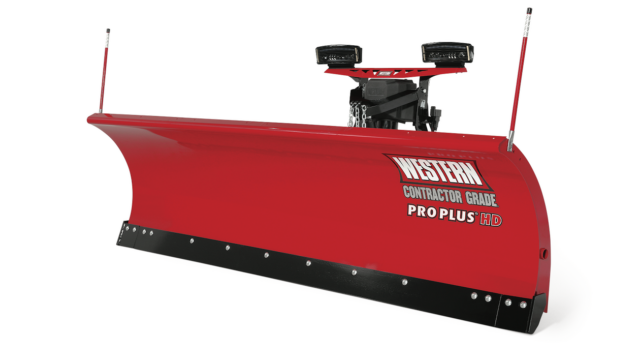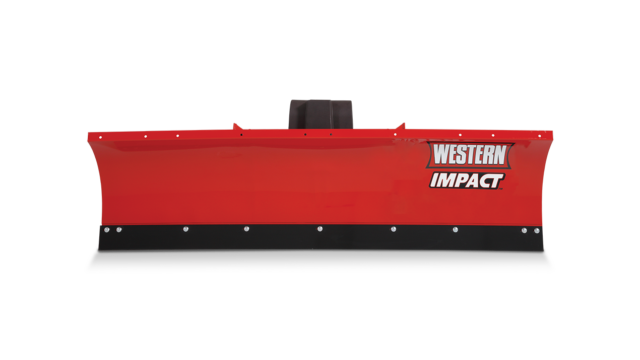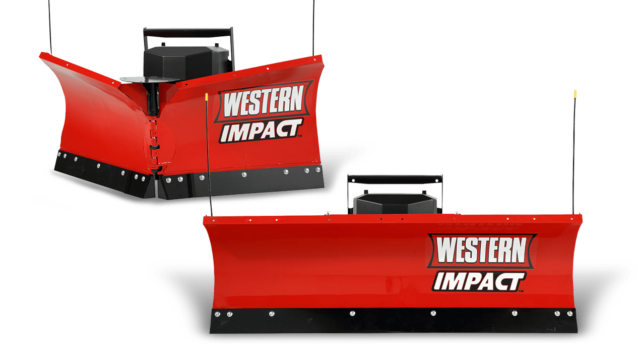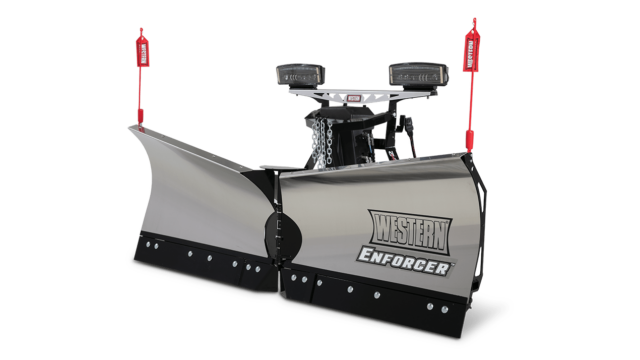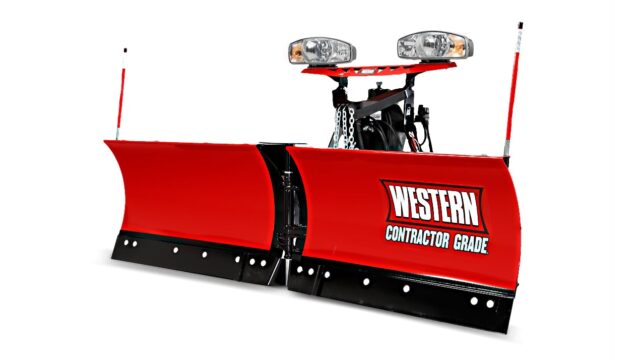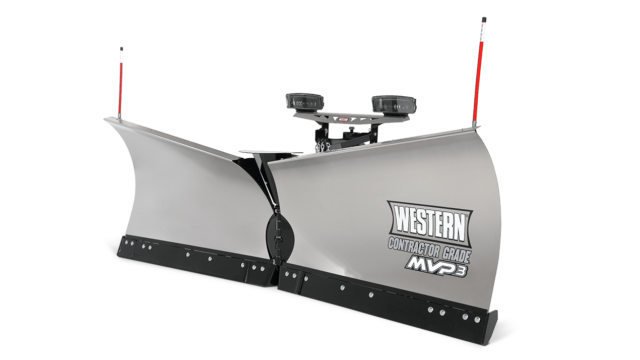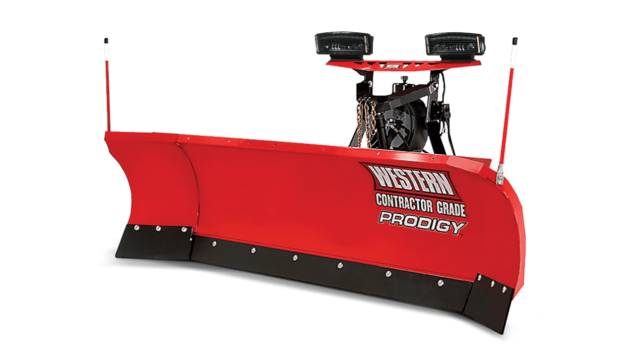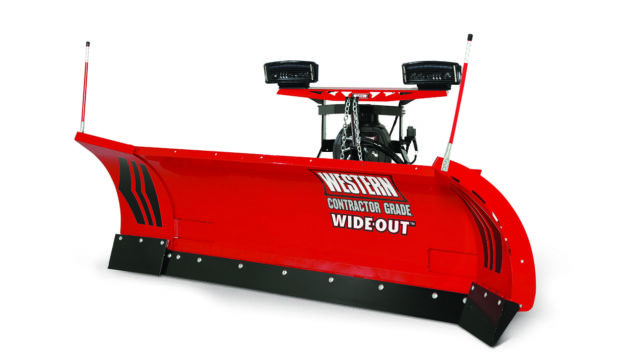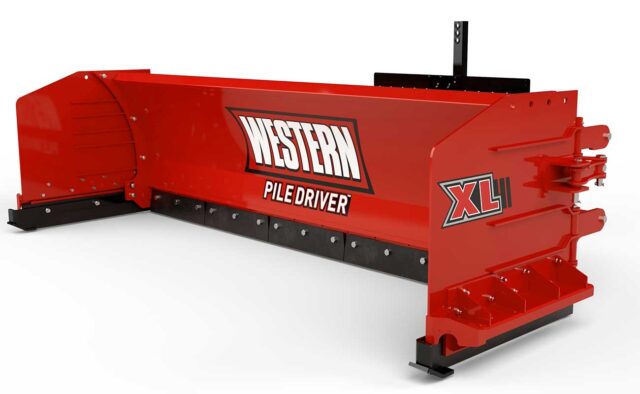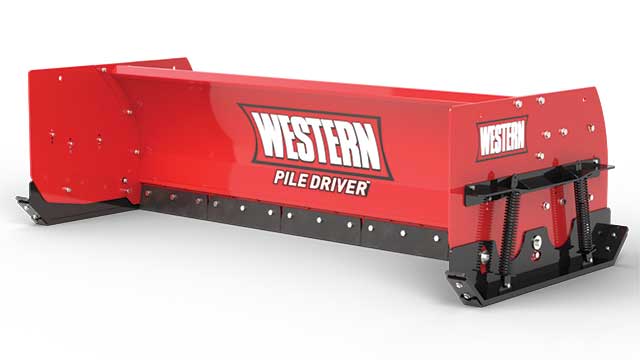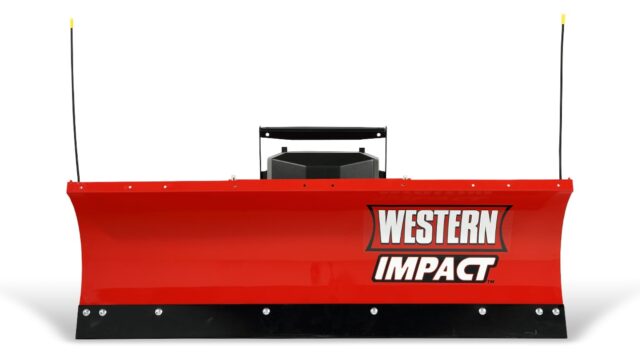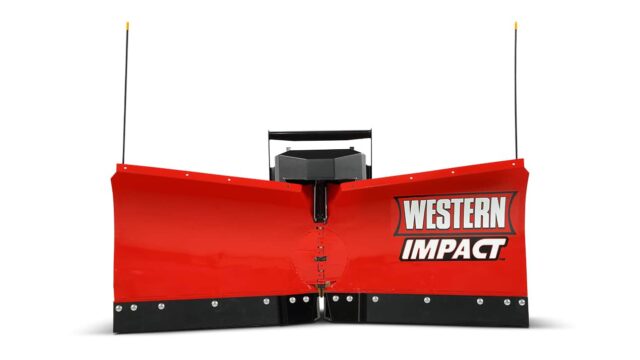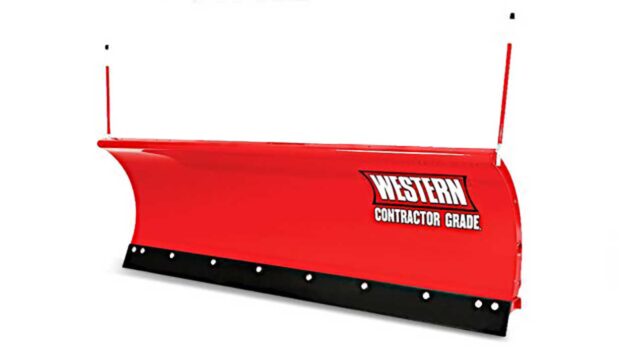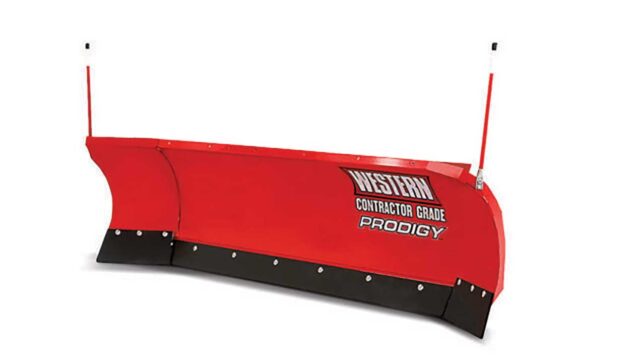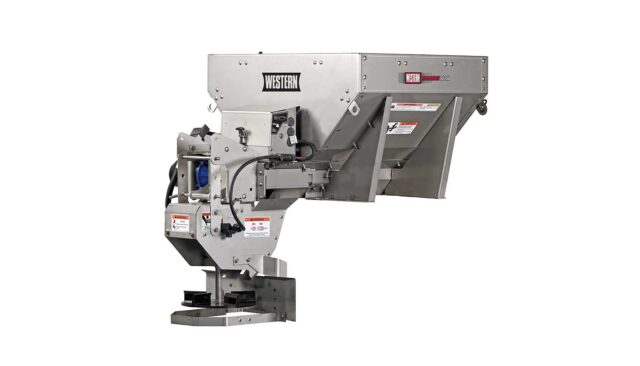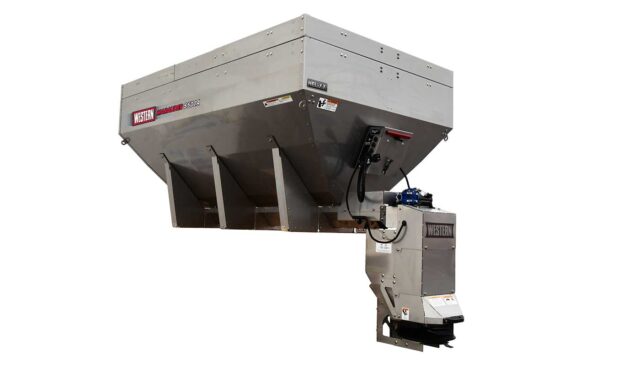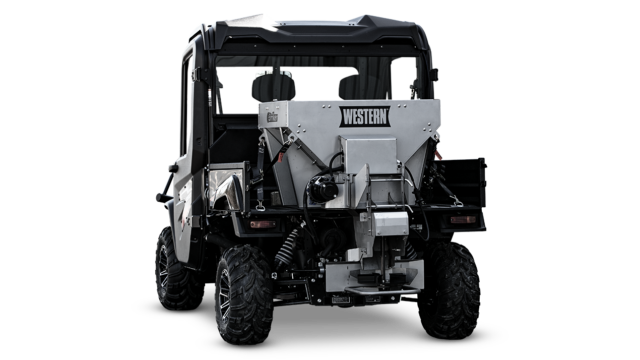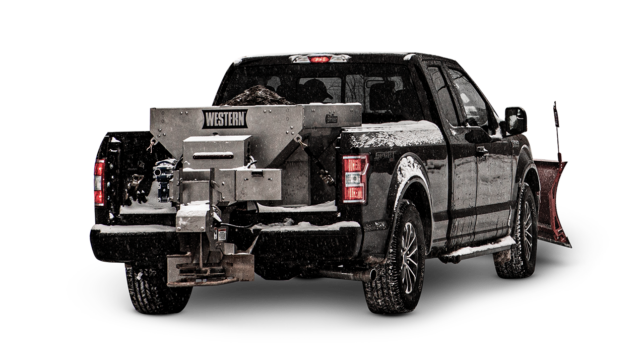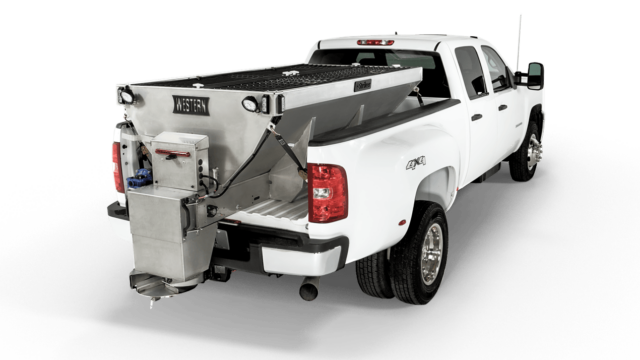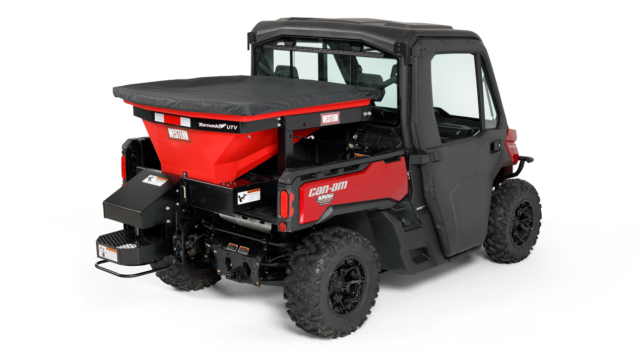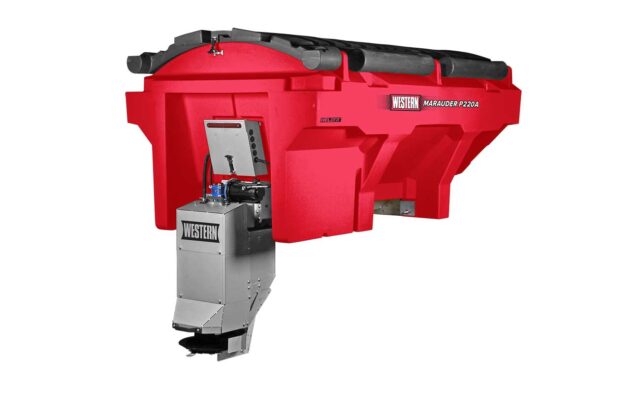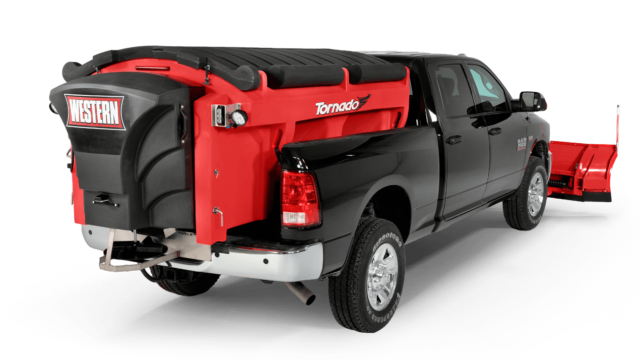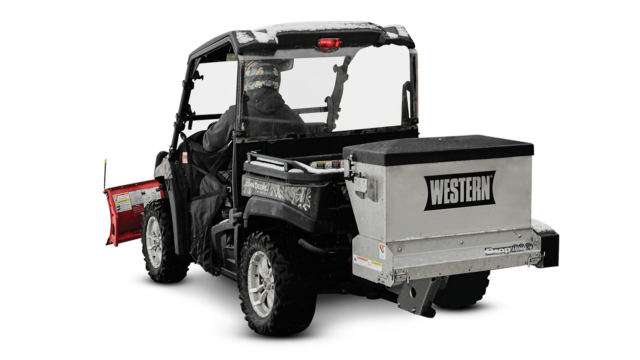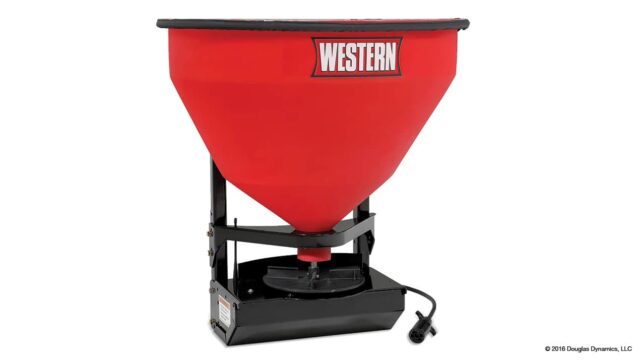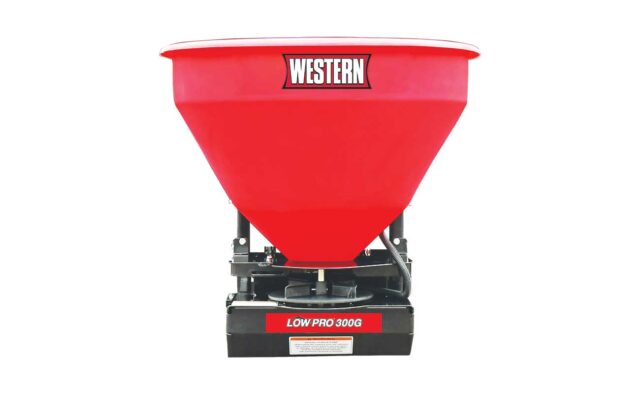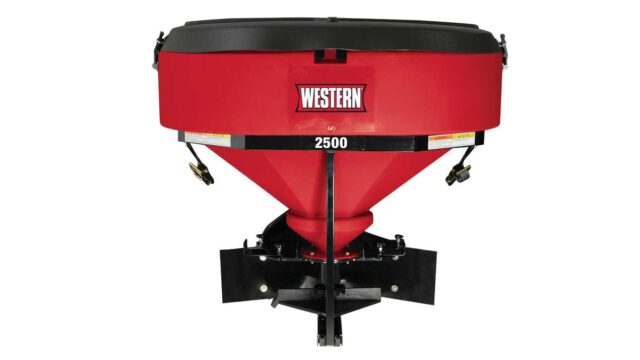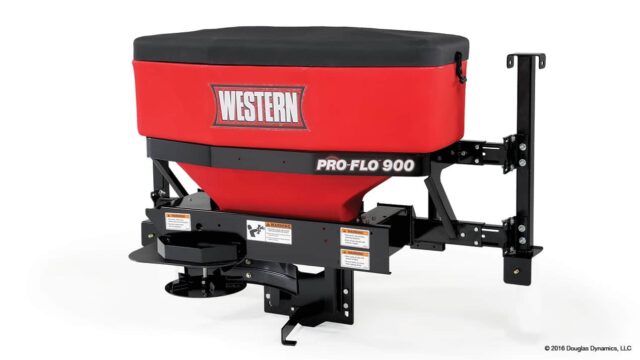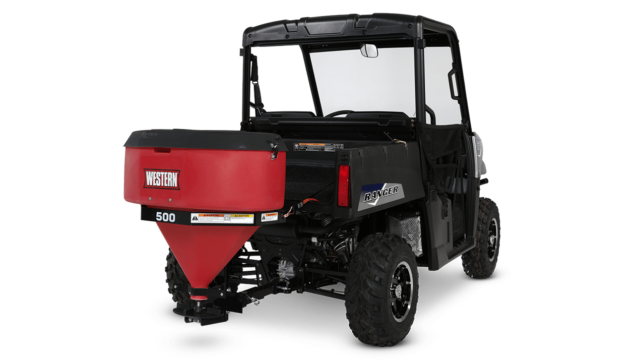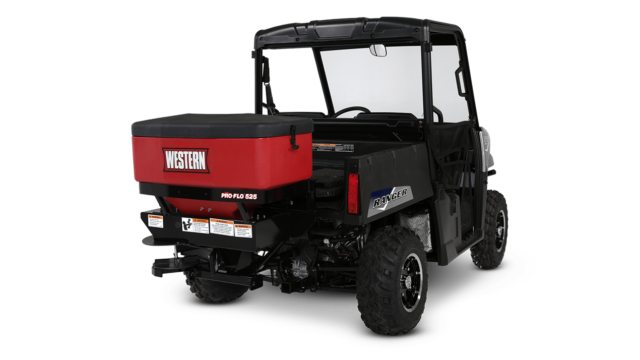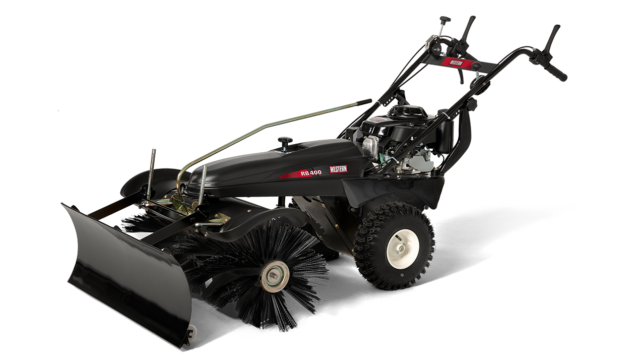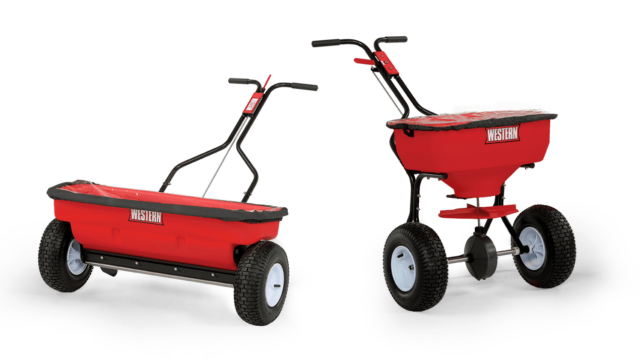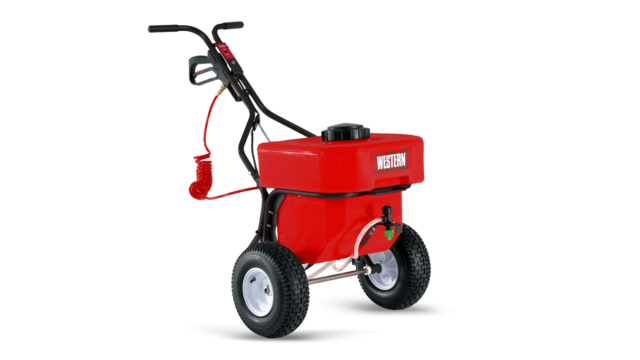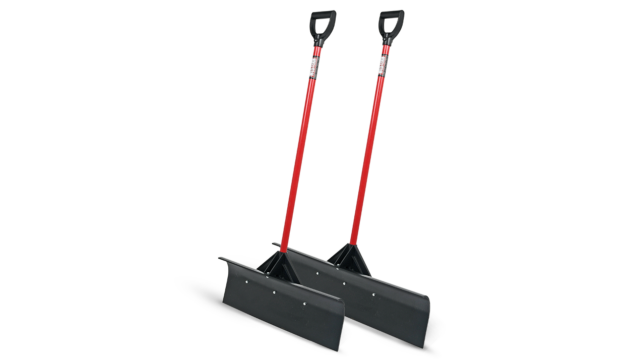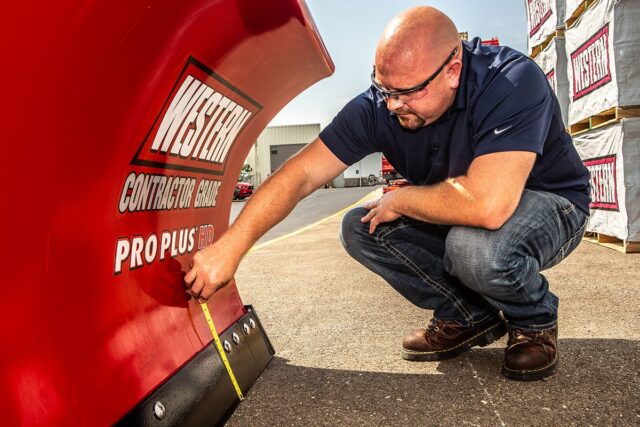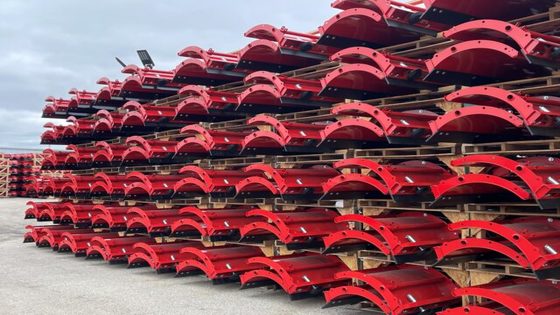Resource Articles Category: Consumer's Guide
Chain or Auger Spreader? How to Choose the Right Material Feed System
Created October 11, 2021
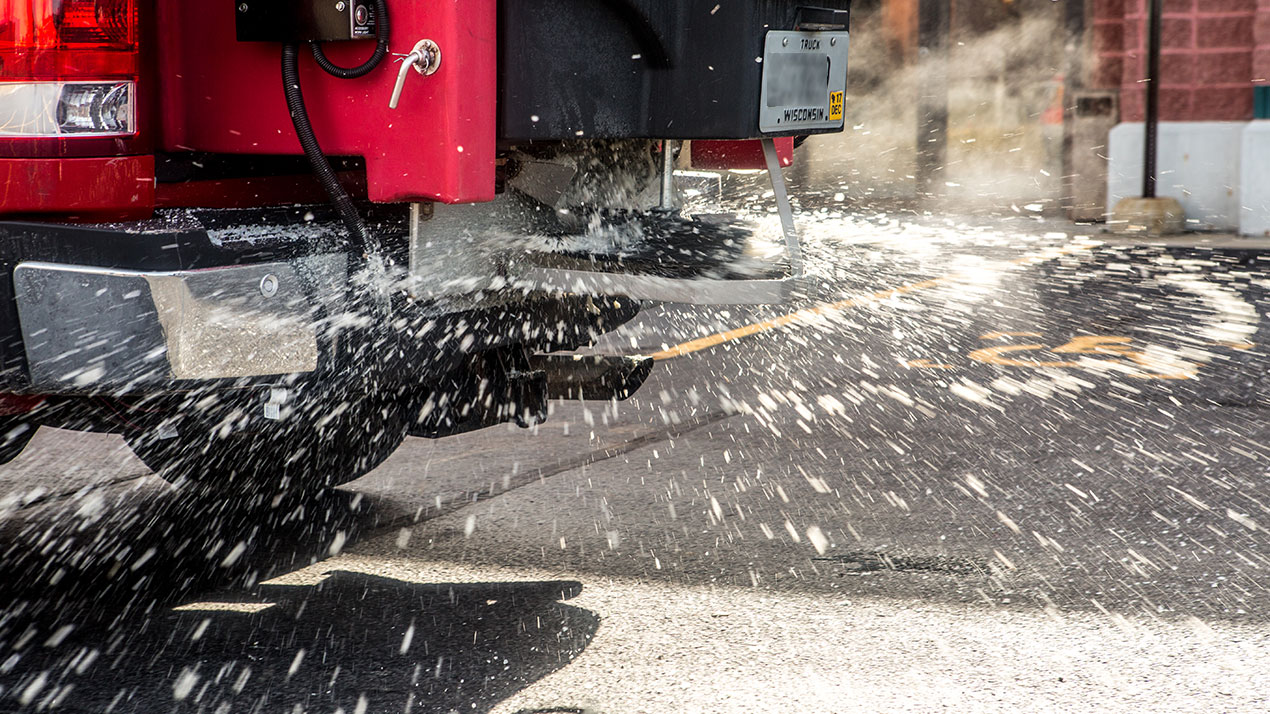
If you’re shopping for a new hopper spreader, you may be trying to decide between a pintle chain or auger delivery system. Whichever you choose, it’s important to first understand the key differences between the two feed systems before you buy. Here’s a quick guide from WESTERN® to keep you informed.
Feed System Differentiation
The biggest difference between a pintle chain and auger delivery system comes down to one thing: engineering. It’s all about how the material is fed to the spinner, which is dependent on material type and can greatly impact performance.
- Auger systems consistently spiral the material out of the hopper and deliver an even feed to the spinner. Augers have fewer moving parts, which typically translates to fewer repairs but that is completely dependent on how well you maintain your equipment.
- Pintle chain systems consist of a number of components that comprise a larger conveyor system. The feed gate opens a door where it pushes the material to the discharge chute and drops down to the spinner assembly.

Spreading Material Compatibility
The first question to ask when making any type of spreader decision is “what type of material am I using?” Salt and sand are totally different from one another and that’s perhaps the biggest factor in choosing the right spreader for your specific needs. Here’s why you may want one versus the other:
Auger + Salt: Auger systems are best for free-flowing materials like bulk salt at a slow, steady flow rate. Salt is used in densely populated cities on highways and metropolitan roads where the taxpayer pool is high and safe travel is expected—even during the middle of a storm. Once salt is exposed to moisture, it has a chemical reaction and starts to activate, melting ice to keep roads safer.
Chain + Sand: Smaller towns and villages in rural areas and remote routes tend to spread sand due to cost and sourcing. This is where a pintle chain system is usually recommend because they are built to handle heavier materials, including sand and other natural materials from the area. These materials can help with traction, although there is no chemical reaction to melt the ice.
Material Output & Pattern
When choosing the right material feed system, you need to understand the material output and how that impacts pattern and performance. Contractors typically put down 150 – 750 lbs of salt per acre and 500 – 2,000 lbs of sand per acre. That’s about three times the amount of sand needed compared to salt, which is why different delivery systems are designed to meet those needs.
- Auger: An auger improves material output and pattern with an even flow of material delivered to the spinner. Salt needs to be distributed evenly in order for the chemical reaction to work properly, which is why the auger delivery system is preferred when deicing.
- Chain: A chain conveyor is like a Swiss army knife and can work for both sand and salt. The feed gate typically opens to 8” tall but most contractors set it at 2-3” when using salt so they don’t waste material and over salt the property. When spreading sand and natural materials, it’s best to expand the feed gate opening to allow for more material flow. Since a lot of sand is needed for traction, you want to spread a lot of material at once and a chain delivery system is intended for that.
TIP: WESTERN offers an inverted V for specific spreader models to help keep sufficient material weight off of the conveyor, ensuring a smooth startup and consistent flow of material.
Hopper or Tailgate Spreader
Beyond the material and maintenance, you’ll also want to consider what kind of spreader you’re looking to use. Large hopper spreaders, like the WESTERN Striker® and Tornado™ tend to have the pintle chain because of the larger volume and the ability to move more material. On the other hand, the smaller tailgate spreaders such as the PRO FLO™ 525 & 900 usually have an auger to guide the material down to the chute.
The Deciding Factor
The decision might end up being as simple as your application and what your vehicle can handle. It’s important to know the difference between the pintle chain and auger delivery systems to fully understand which system is right for you. Knowing about the inner workings of your ice control equipment will help you make smart decisions and ensure you’re using the machine properly.
Ice control is an important step in winter cleanup and can be a lucrative part of your business if you’re equipped and informed. As they say, you plow for show, but you spread for dough. If you make the right investment in your ice control equipment, it can pay big dividends for you in the long run.
For more information on which type of spreader is best for your specific setup, contact your local WESTERN dealer for pricing and availability.
Other Articles You May Be Interested In:
The Benefits Of Transitioning to LED Headlights This Winter
Created October 30, 2020
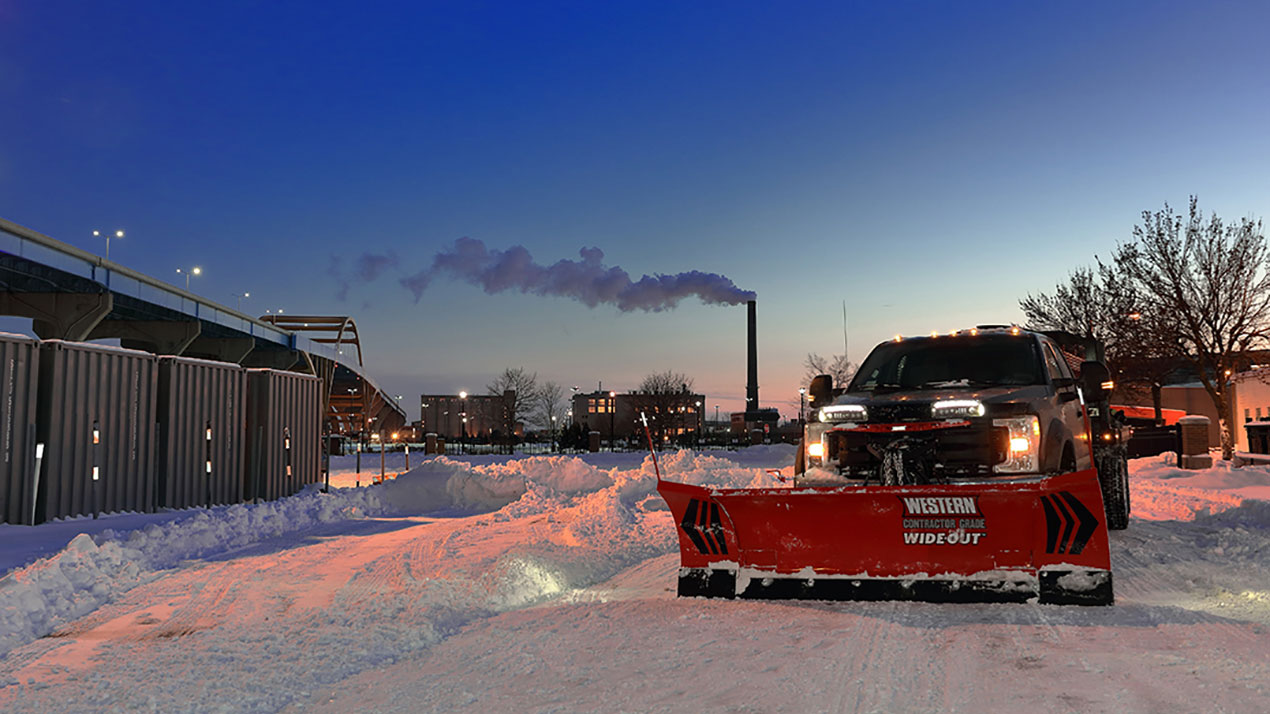
Plow drivers are usually out before the sun rises when visibility is difficult. As the industry continuously evolves, new products are introduced to the market to help snow and ice contractors improve safety and efficiency—one of which are LED headlamps.
Lead the Way, Clear As Day
The WESTERN® NIGHTHAWK™ LED Headlights are designed with EdgeView™ Technology to provide the best all-around view of the plow’s operating environment. Light is directed through the outer edge of each headlamp, illuminating the entire plow and allowing for a full 180 degrees of visibility.
Once you start using LEDs, it will be hard to go back to traditional halogens. SEE the difference for yourself: LED vs Dual-Halogen Headlight Comparison
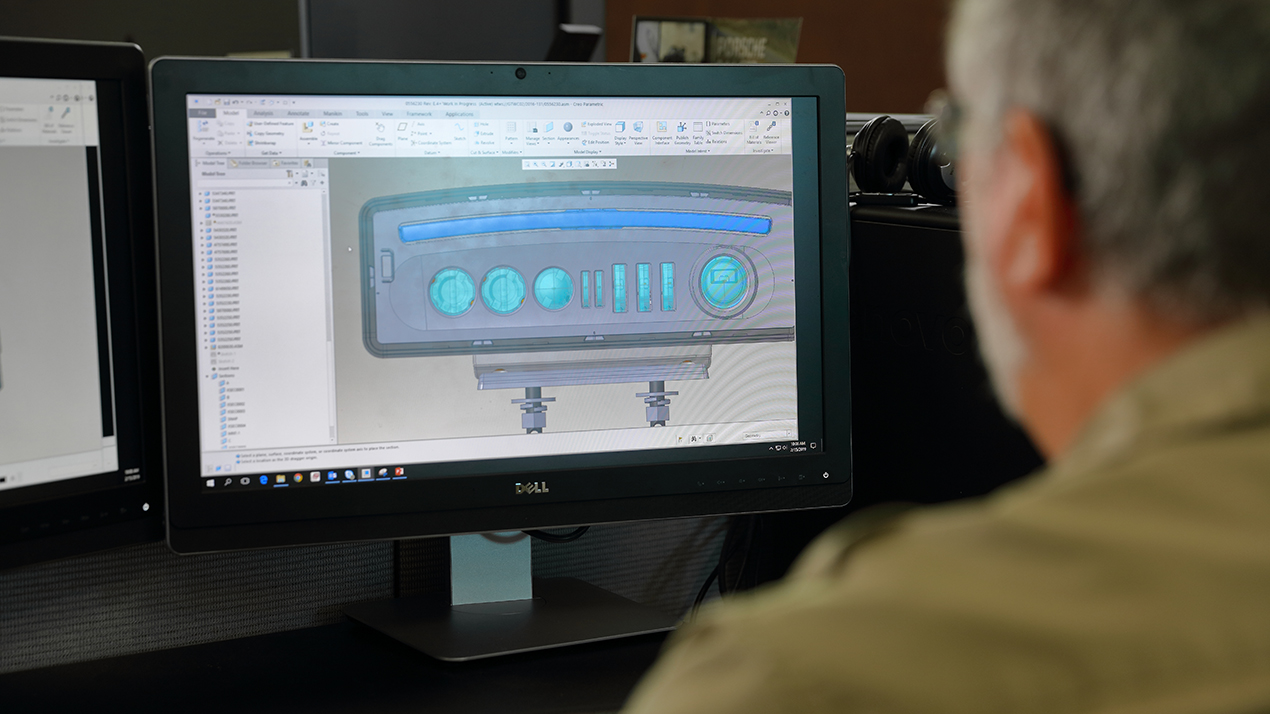
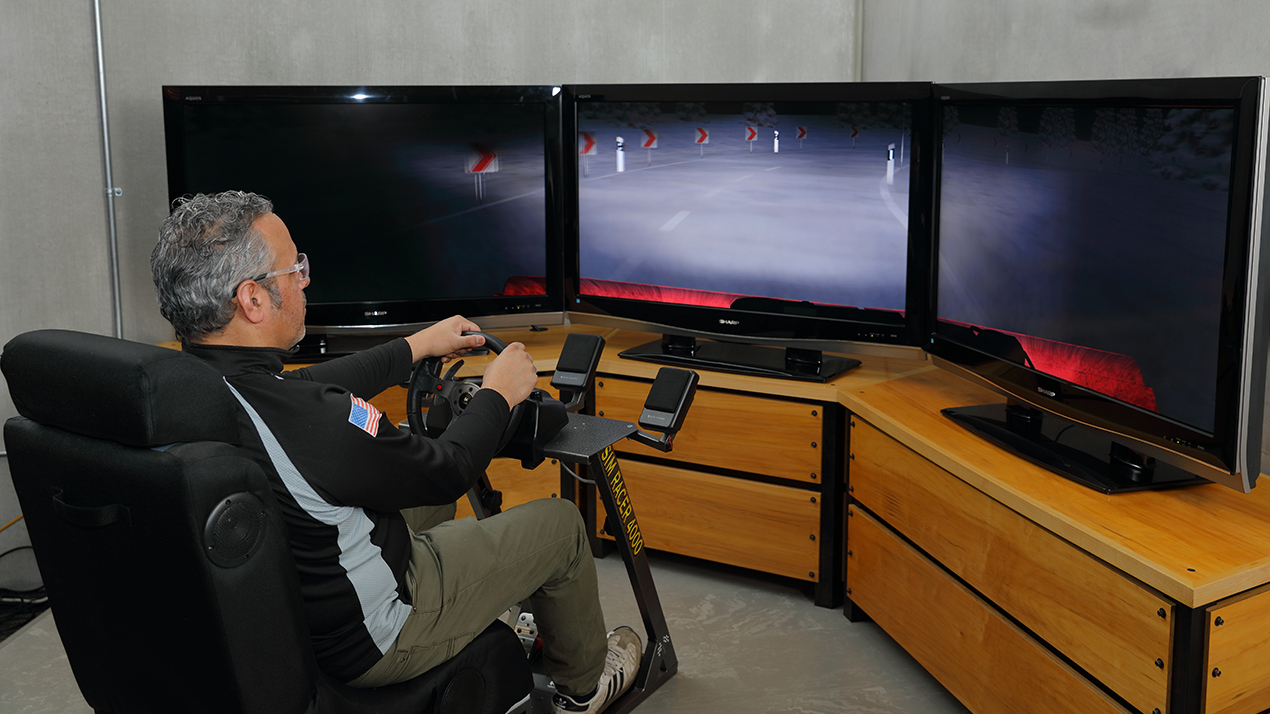
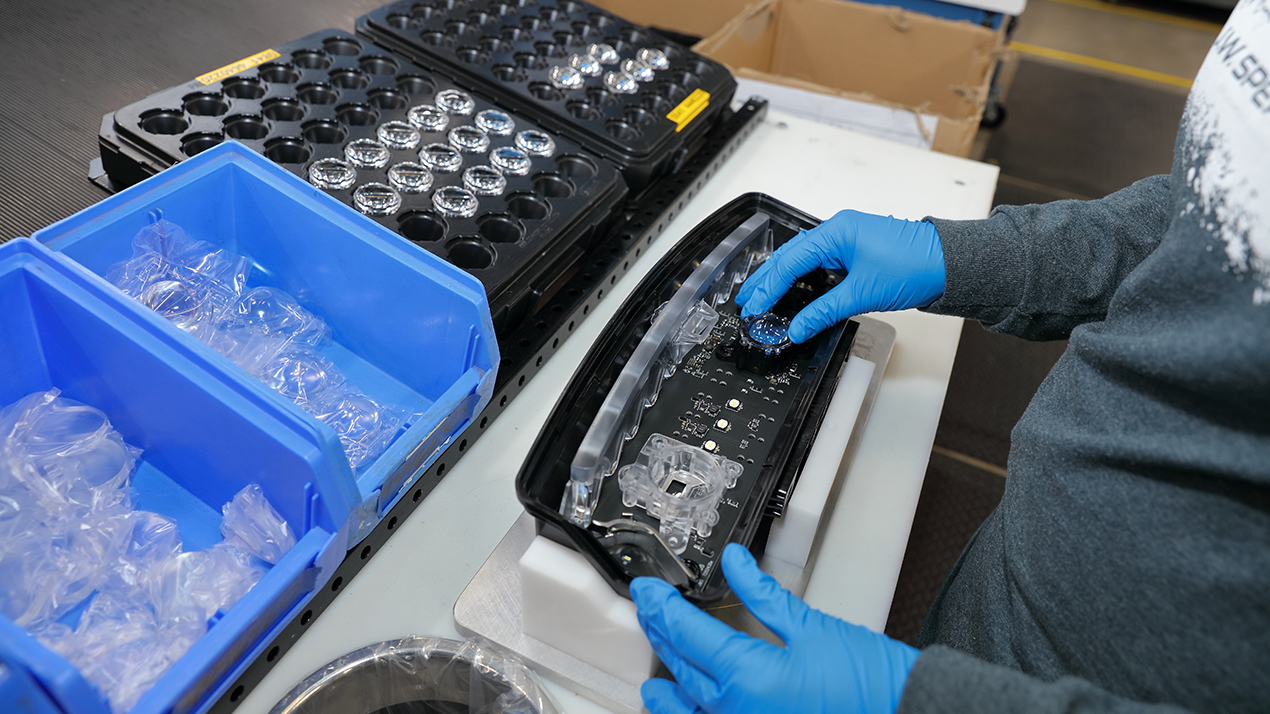
Top 5 Benefits of NIGHTHAWK LED Headlamps
We looked at the disadvantages of LED headlamps and solved them in the WESTERN way, creating a product that fits the needs of winter contractors. Here are a few reasons you might want to make the switch to NIGHTHAWK LEDs this winter:
- Improved Visibility: Early LED headlamps were not omni-directional making them ineffective because the light only went in one direction. Instantly illuminate your entire view with EdgeView Technology—WESTERN’s patented directional lighting that shoots down and to the side, covering all directions. Traditional blind or “dark” spots become visible so plow drivers can see each edge of their plow and anything in the immediate surroundings. The superior light pattern not only goes wider but also farther than other headlamps, allowing drivers to see signs, people and potential obstacles over a hundred yards away. That’s more than 2X the light output of halogens, with high beams extending light even further for a 350 yard view.
- Defined Horizon & Placement: The precisely-tuned pattern and defined low beam cutoff line keeps the light from illuminating above the horizon, reducing the glare off snowflakes and giving a clearer view down the road. The enhanced solid optic elements for low and high beams place light exactly where it’s needed, instead of relying on reflectors that scatter light.
- Intuitive Heating System: The perception that LED headlamps will freeze over and not function in winter is irrelevant when you’re using NIGHTHAWK LEDs but can be a major disadvantage with other LED options. Since the lighting elements themselves don’t give off much heat, not just any aftermarket LED will work for winter services. The NIGHTHAWK LED’s have an intuitive heating system that senses the temperature and turns on the heat only when necessary. In addition, the lens has a forward slope and no bezel where ice typically forms on other lamps in order to combat ice bridging.
- Longer Lifespan: Although the initial investment of LEDs compared to dual-halogen headlamps are greater up front, the benefits of LEDs strongly outweigh the initial cost. The components of an LED and the way they generate light significantly extends the lifespan of these bulbs so you won’t need to replace them nearly as often as halogens. LEDs are rated for up to 50,000 hours of continual use versus a sealed beam or a halogen headlamp at 300 to 500 hours. On average, halogens will last a season to a season and a half versus LED headlamps that will last for the life of the plow. That’s a big difference that can reduce maintenance and down time—a definitive payback you can calculate.
- Superior Reliability: Built with durability in mind, the WESTERN headlamps offer a compact design that is less prone to shock and vibration while plowing. Featuring a completely sealed, weatherproof housing to stand up to harsh weather conditions, NIGHTHAWK LED headlamps have undergone thorough testing. This includes hot and cold thermal shocking, cold water submersion, corrosion tests and impact simulations to prepare them for winter’s worst.
Ensuring that you have the right headlamps for the job is important but they also need to be aimed correctly in order to achieve optimal visibility. Visit this additional article for more information on how to properly align your snowplow headlamps.
Let There Be Light
Ready to experience the advantages of NIGHTHAWK LED headlamps this winter? Avoid plowing in the dark and contact your local WESTERN dealer for more information and pricing. The performance is truly unbeatable.
A Guide to Choosing the Right Cutting Edge for Your Plow
Created September 30, 2020
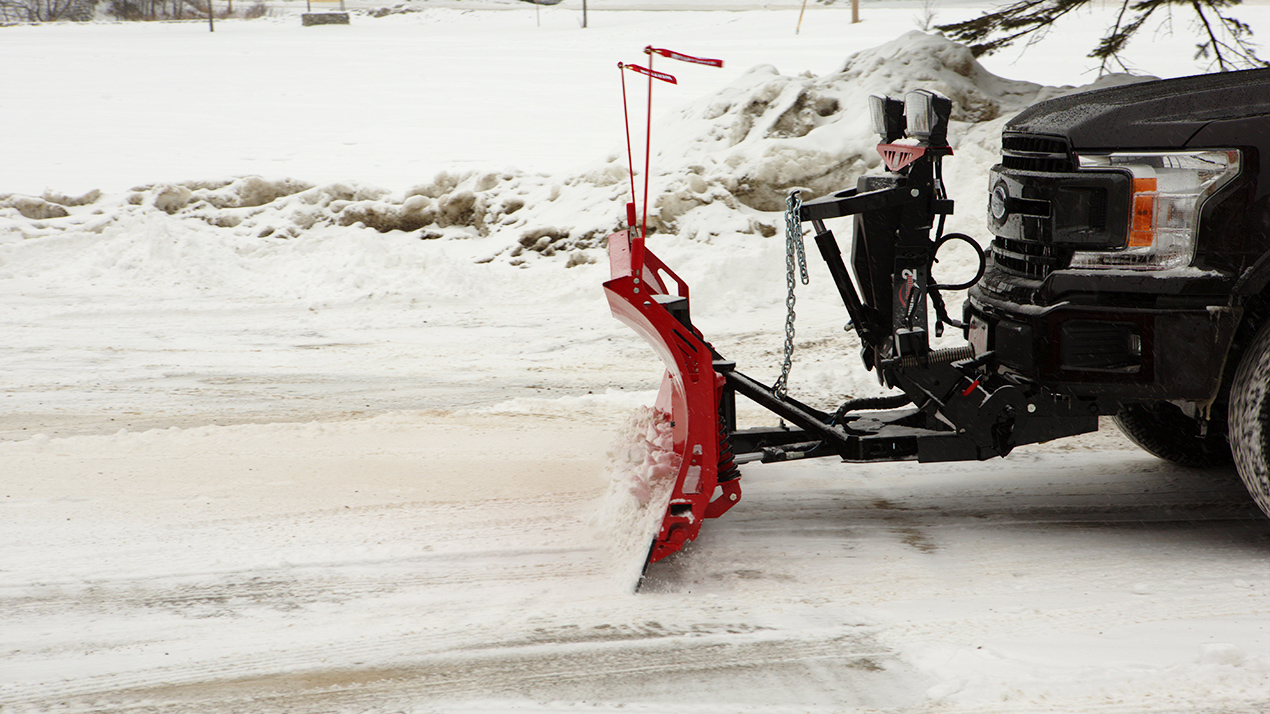
There are two main outputs contractors want out of their snowplow cutting edge—the longest life and the most efficient scrape. After reading this guide, you’ll understand which cutting edge is best for your setup and how to recoup your replacement costs accordingly.
Before you decide on the proper edge, you need to have the right plow for the job. Plows are designed for specific applications, so not all plows will provide the same cutting edge compatibility. For instance, a WESTERN® DEFENDER™ is ideal for homeowners and not intended for constant use like a PRO PLUS™ or WIDE-OUT™ that is meant for commercial properties. Ensuring you have the right setup for the application will help to increase productivity.
Replacement Cycle Factors
When figuring out cutting edge replacement frequencies, it’s not necessarily a matter of if you will need to replace it; it’s a matter of when. The material removal rate of a plow edge is dependent on the friction between the surface and the material in contact with the ground. The six variables that impact this rate are:
- Contact Pressure—The more pressure there is, the more wear on your cutting edge. Uneven surfaces increase contact pressure when a small portion of the blade is in contact with the surface. It may be ideal to go with a thicker edge or accessorize with a high wear shoe kit to increase surface area on the road. This spreads the weight of the plow across a greater surface to slow the cutting edge wear.
- Climate—Although there isn’t a lot you can control, you can be aware of how the climate impacts your cutting edge wear rate. A wet, slushy climate found in the coastal region will typically lead to surface conditions that reduce friction and wear. Where-as a high altitude climate that is cold and dry tends to produce plowing conditions that increase friction and increases wear.
- Surface Conditions—Friction is decreased and causes less wear on loose or wet surfaces. Solid, dry surfaces increase friction and cutting edge wear.
- Surface Material—Granite or hard, scratchy surfaces (like many municipal roads) wear cutting edges quicker than smoother or softer surfaces like asphalt or parking garage pavement.
- Speed—The faster you are traveling, the more heat is generated through friction which can increase the wear rate. When plowing a large, open warehouse parking lot with minimal obstacles, you can move faster versus a driveway where you need to slow down to accommodate the short distance increased obstacles.
- Cutting Edge Material—Each material type wears at a different rate. Some cutting edges are made from harder material and can withstand more than softer materials. For instance, you will replace rubber edges much more quickly than you would a carbide edge.
If you’re replacing your edge more than twice a season, you may want to look into other material options for your intended use. The more often you have to replace your cutting edge, the more down time for your business and the higher your cost of owning and maintaining your plow will be.




Signs You Need a New Cutting Edge
Before any event, complete a walk around inspection and check for cracks or damage to the edge. Monitor wear and replace the cutting edge before you get to the base angle that protects the blade of your plow, as uneven wear can negatively impact performance. Curb guards can help reduce uneven wear patterns and lengthen the life of your cutting edge.
Steel Cutting Edges
High carbon steel cutting edges, 1080 grade tensile strength as example, are the most common material type and come standard on all WESTERN plows. They are multi-purpose and resistant to bending and twisting, giving a clean scrape while minimizing damage to the property surface. These traditional edges are easily sourced and readily available so the replacement cost is relatively low, however you will need to replace them more frequently than harder materials such as specialty steels like AR400 or carbide.
Carbide Cutting Edges
This is the most durable cutting edge material. Made with tungsten for high-performance wear resistance, this cutting edge is meant for abrasive surfaces. Not every plow and application requires this tough of an edge, so it is only available for select plow models. Due to the strength of the cutting edge material, it can cause surface damage so it’s typically used on roads or surfaces that are repaved often. Since the material is less commonly available, it comes with a higher price tag. The higher initial price is balanced by longer life and can be well worth it if your steel edge is wearing out too quickly.
Rubber Cutting Edges
A rubber cutting edge is the most forgiving and delicate material, but can also wear quickly requiring frequent replacements. Due to the elastic tendencies of rubber, it glides over the surface rather than scraping into it. This can also result in residual snow remaining and may require additional salt application for a clean surface. With a higher replacement cycle, you’ll want to limit use to specialty properties where a rubber edge is required (like a parking garage).
Some builder guidelines and winter service contracts will specify how the pavement surface must be maintained. Improper maintenance could result in a potential safety issue. Since it’s not ideal to swap edges throughout the season, snow and ice contractors that accept this specialized work have dedicated equipment for these accounts and rubber edges are often part of the solution.
Poly Cutting Edges
Poly is a good middle-of-the-road cutting edge; it’s not as hard as steel but not as soft as rubber. This allows for a more effective scrape that is durable for longer distances than rubber. The main benefit to using a poly cutting edge is that it’s ideal for delicate or decorative surfaces. This type of surface is common in shopping malls, banks and sometimes even residential properties. Poly edges don’t last as long as steel but reducing the risk of damage is often worth the additional replacement and expense. Poly can vary greatly in terms of chemical makeup and quality. As a result, the price can also vary greatly.
Estimating Replacement Costs for Maximum Profitability
Before you can consider profitability, you need to establish good quality service—are you delivering the level of service you’re billing for? If the edge lasts longer but creates property damage or if you’re using an inexpensive cutting edge but replacing it multiple times throughout the season, you need to step back and think, what is the long term cost to your business? It’s probably not ideal to continue use with these situations due to the associated costs, labor and repairs needed by not having the proper edge.
In order to remain profitable and keep high quality service, you’ll need to build the replacement cost into your property estimates. Monitor wear for each cutting edge type to determine useable life and charge accordingly. You can do this by measuring the height of the cutting edge prior to the season. Measure the useable material in a few different areas across the length of the blade in case there is an uneven wear pattern from prior use.
After one month, go back and measure the useable material left and extend that to the rest of your season. As example, if you’re removing ½” of material per month in a four month season, you may not need to make any change. But, if your usage is causing wear of 2” or more per month, you may need to think about using thicker or harder material. You have to consider all factors when finding the perfect edge for your setup.
Beware of the “Too Good To Be True” Aftermarket Trap
As you may have noticed, not all cutting edges are created equal. When purchasing OEM cutting edges, you can rest assured knowing that they are designed for your specific plow and intended use. Although will fit parts may be inexpensive initially, it often comes down to quality and design. Lean on our expertise and trust WESTERN for all your OEM cutting edge and accessory needs.
What Goes Into the Making of a Snow Plow
Created April 15, 2020
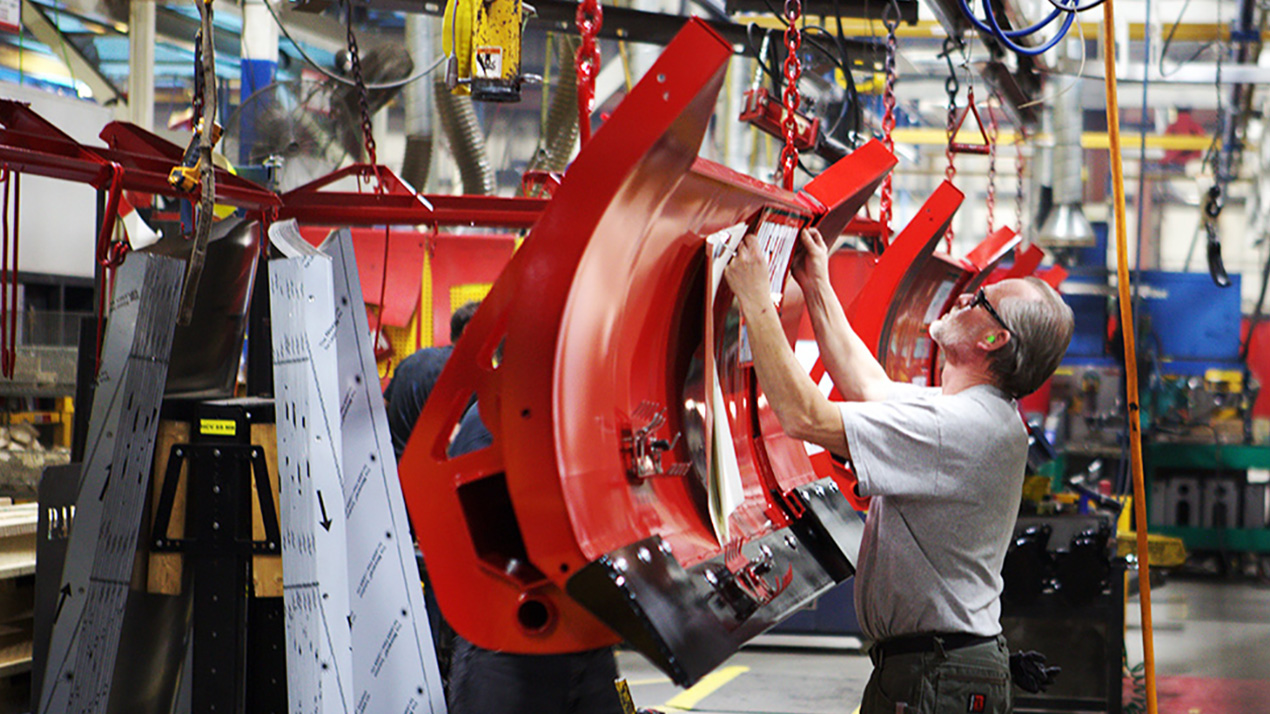
With more than 70 years of snow plow experience, Western Products has its manufacturing process down to a science. From initial concept to production, our dedicated team works relentlessly to give you the highest quality of snow and ice control products in the market. Here’s a little insight to how we do it.
From Concept to Design—Engineering At Its Best
We don’t employ your typical white glove engineers, we choose people that know what it takes to get things done right—and that doesn’t mean just throwing more metal at it to make it stronger. We build our products as light as possible while still maintaining strength and durability.
Every spring, our team is eager to get started on our new product lineup. Before determining which product we’re going to build, we need to understand our customer’s preferences, expectations and aversions. We do this through focus groups, social media, online surveys and face-to-face interactions to identify exactly what drives our customers—and then we build product that meets that demand.
Prototype Testing and Winter Validation
Once we bring a concept to life with a prototype, we push it to the limit with the goal of breaking it so we can make it better. WESTERN® knows the importance of durability and by pushing our products to the brink of failure, we can redesign and strengthen its weakest points. Each version scores better than the last until we are confident it’s ready to withstand anything winter throws its way.
Every Two Hours, a New Snow Plow is Born
Our mixed-model production structure means that we’re able to build every product every minute throughout the plant to ensure we always have product available for our customers. The two major components our customers receive when they order a snow plow are a fully assembled blade and fully assembled attachments (including fully functioning hydraulics). By insourcing the critical process of manufacturing our own power units and hydraulic components, it helps to support lead time performance and improve product quality.
Our snow plows are produced utilizing a robust lean manufacturing process that begins with profiling (burning) individual component parts from flat sheet steel. Next, these components are formed and welded prior to entering a fifteen-step prime and powder coat process. Finally, the components are assembled, packaged and staged for shipment. These competitive advantages position us to deliver more reliable products, award-winning snowplows even, and get them in the hands of our customers faster.
For more information about our manufacturing facility and how WESTERN gets more jobs done faster, watch our behind the scenes video.
Understanding the Complexity of Modern Truck Electrical Systems
Created October 17, 2017
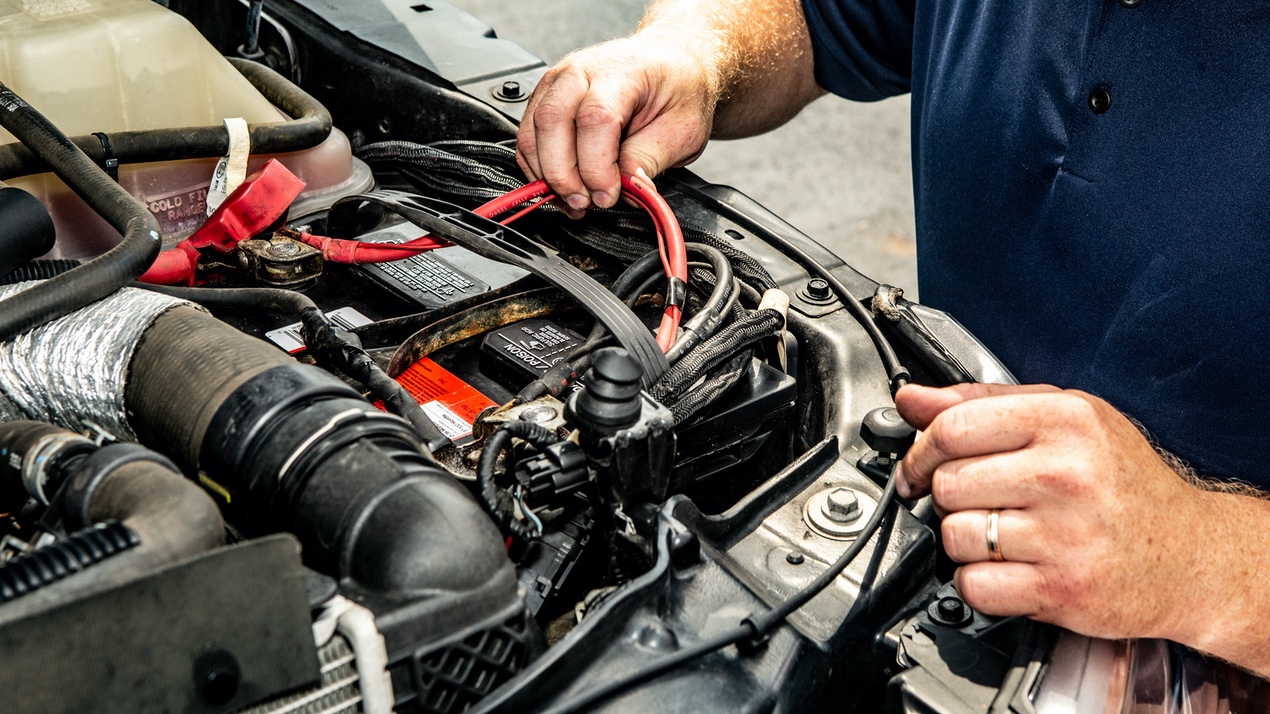
If it’s more modern, it should be simpler, right? Not necessarily. Anyone who has installed a snowplow or a spreader on a more modern work truck knows the feeling. It’s that confusing moment when you open the hood to confront an engine compartment that looks more like something from Microsoft than GM. Complex electrical systems aren’t just an issue for installers though.
Every truck these days, every trim level and option, creates a unique set of challenges for anyone trying to design any kind of powered attachment. Each truck manufacturer is slightly different (adding to the fun) but, in general, this is how they work.
Is That a Truck With a Computer or a Computer With a Truck?
These days, every truck at every trim and option level has a group of onboard computers whose job is to monitor the truck’s “health” and every aspect of its operation. Even without fancy GPS, camera and Bluetooth systems, a stripped-down truck has sensors and computers controlling fuel mix, engine temperature, emissions, electrical load, and more.
Every vehicle today comes from the factory with a keen sense of its own limits. The on-board computer monitoring system that monitors the vehicle has a series of lookup tables where it compares the sensor outputs from moment to moment. If the temperature in the engine reaches a certain point, the computer will alert the operator. If a door is ajar, an icon on the dash will inform the driver not only that the vehicle is not secure, but which door is open.
The entire setup of the various small computers and sensors throughout the vehicle is called the Controller Area Network, or the CAN. Historically, as the number of items and conditions monitored and controlled grew, direct analog wiring became difficult and then impossible. Eventually they were replaced with a highly specific kind of computer network.
There are a number of reasons for the increased complexity. Fuel efficiency drives the need to monitor inputs and outputs, continually adjusting fuel mix and airflow. Safety and reliability demand that sophisticated brake sensors continually monitor the status and functioning of each individual brake, applying or reducing friction as needed to ensure smooth, reliable and risk-free operation. And every one of the modern conveniences of a truck requires a computer. They control the preset seat and mirror adjustments that the vehicle will remember. They are responsible for every aspect of your comfort in the cab.
Not to mention, ever-changing government regulations on fuel efficiency and safety push manufacturers to innovate while also maintaining the performance that customers expect.
This, of course, all comes at a cost. In replacing miles of direct wiring and hideously complicated wiring harnesses, trucks now possess very complex programming.
The Bus Is Full
Preinstalled parts are hard enough to keep track of, and third party equipment adds to the mess. Lift gates, winches, spreaders, and snowplows all place a burden on the systems of the truck. Because there are dozens of attachments from a multitude of suppliers, the automotive manufacturers have determined that they cannot account for all the potential combinations.
The network of computers, sensors and wiring (the infrastructure of the CAN) is known as the CAN bus, and only certain things are allowed on the “bus.” Snowplows and their systems typically aren’t supported by the CAN bus infrastructure.
The Struggle Continues
This obviously poses a problem for snowplow and spreader manufacturers. Because the plow systems aren’t part of the CAN bus, any changes the plow makes to the vehicle will look like problems to the system, instead of additions.
For example, during the initial activation of a snowplow, there is a voltage “inrush” peaking for several milliseconds at a level higher than the pump operates at normally. That voltage comes directly from the truck and is (very temporarily) lost from the truck’s energy “budget,” leading the truck’s system to think there’s a problem.
Remember how the truck’s CAN has lookup tables outlining potential problems and that anything the plow is doing is invisible to the CAN as a desired function? If the voltage “inrush” spikes high enough, for a long enough period of time, the computer will record it as a fault, or a problem in the system.
Working and Playing Nicely With Others
As a result, work-truck attachment manufacturers work with truck manufacturers to understand the limits and boundaries of equipment. They modify their hardware, not so that it can talk to the CAN bus, but so that it doesn’t exceed the limitations.
For example, there are additions that can be made to plow circuitry that slow down and level off the “inrush” voltage, so that it remains below the level that will cause problems.
As truck trim levels increase, the number of items drawing on the total amount of energy on the truck grows. As a result, snow-plow manufacturers look for ways to do their jobs with as little energy as possible.
The Good News
Ultimately, the plow manufacturer is responsible for integrating the plow with the existing truck electrical system, not the other way around. Thus, it can take time to add plows to new truck platforms, especially if that platform is brand new.
As a result, more than any other factor, truck electrical systems can easily keep a truck off a plow’s approved list for some time.
The good news is that once plow manufacturers put a plow on a new-truck approved list, you can be sure that it is safe and ready to provide optimum performance.
To learn more about which plows fit best on your truck, use our Quick Match feature or visit your local dealer.
Winged Plows Versus V-Plows
Created June 27, 2016
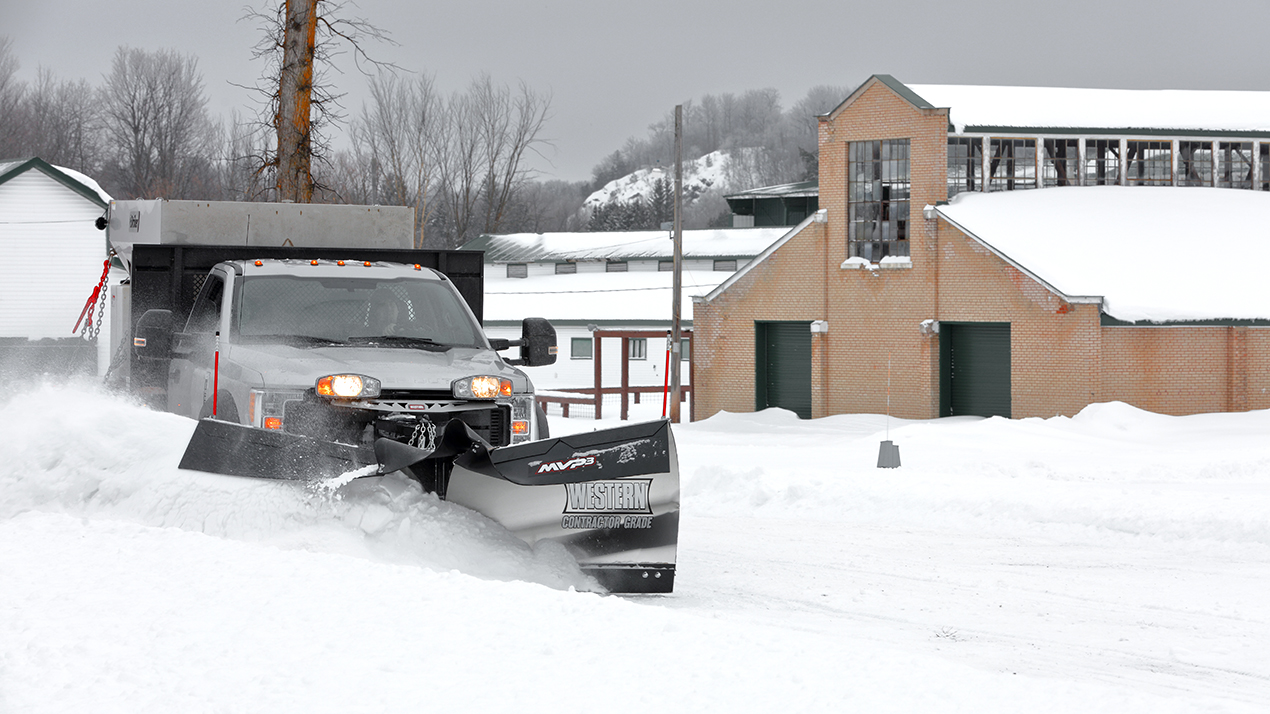
If you read the Internet forums, you will find plenty of opinions on V-plows, winged plows and which design is superior. Both types of plows give you greater versatility than a straight blade. Let’s take a look at what each brings to the table.
why choose a v-plow?
A V-plow blade is hinged in the middle, with hydraulic controls that adjust it from V to straight to scoop modes. In its V position, it breaks through deep snow banks and compacted “hard pack” with fewer passes. The V position can be reversed to create a scoop that allows the blade to carry more snow. V-plows can also be used in a straight blade position for back dragging, windrowing and other uses where a straight blade is desired. Many V-plows also feature flared blades that improve the plow’s snow rolling performance.
add wing extensions to your straght blade or v-plow
For greater carrying capacity there are several wing options. Wing extension kits can be added to many straight blade and V-plow models for moving more snow.
why choose a winged blade?
Some manufacturers offer hydraulic winged plows that simply extend and retract between narrow and wider positions. Automatic winged plow models automatically reposition the wings based on the plowing angle for optimum plowing efficiency. They are especially suited for making beginners more productive, because they operate just like a straight blade.
Fully hydraulic-controlled winged plows provide the most versatility of all winged plows. Although they don’t provide the drift-breaking capability of a V-plow in V mode, they can offer greater carrying capacity, and additional flexibility. Winged plows with full hydraulic control allow you to independently or simultaneously extend the wings on either side of the plow to let you easily transition it from a narrow blade for clearing tight spots and transport, to a wider blade that reduces the number of passes to get a job done.
They also allow you to angle the wings forward, creating a scoop plow that can carry more snow than a V-plow. Unlike a V-plow which is fixed forward in the scoop position, a winged plow can fully angle left or right in scoop position to carry more snow around corners with less spill off.
compare your options and choose what’s best for your situation
For windrowing, a V-plow can be angled in straight-blade mode. With a hydraulically-controlled winged plow, you can angle the leading wing forward with the trailing wing in the full extended position. This configuration allows you to take a wider pass because it directs snow into the moldboard that would otherwise be lost as spillover.
Both V-plows and hydraulically-controlled winged plows give you increased versatility and save you time and money compared to a traditional straight blade. Each offers unique features and benefits that make them better suited to particular types of jobs. If most of your work involves long pushes moving a lot of snow or windrowing, a winged plow might make the most sense. A V-plow, meanwhile, may be the best choice for operators pushing through one plowed-in driveway after another or those dealing with heavy, deep snow.
